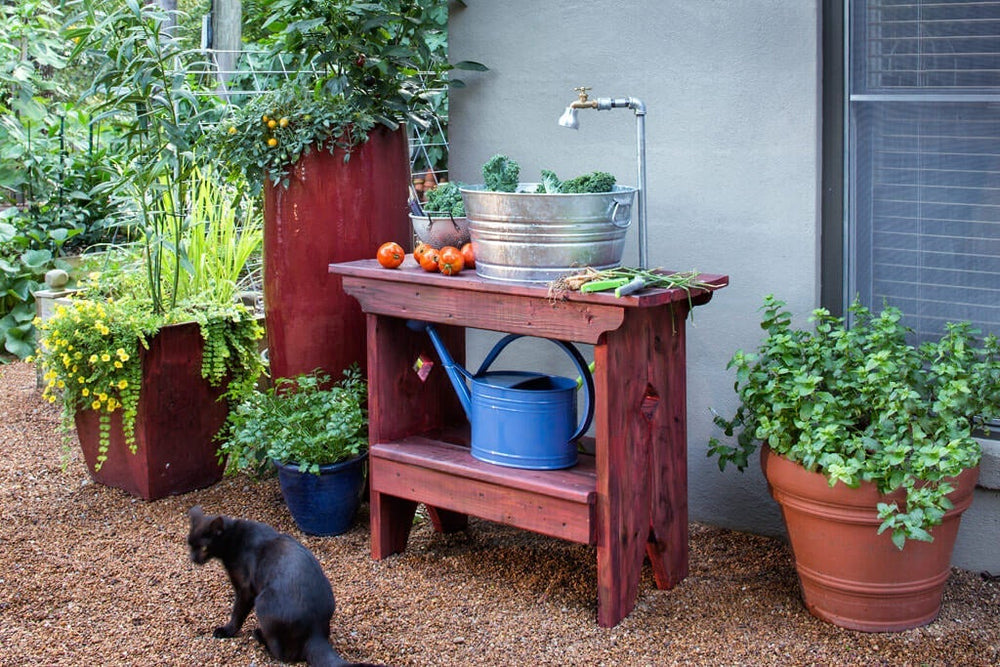An outdoor sink puts water where you need it, when you need it. For washing vegetables, filling a vase, mixing plant food, or quickly watering a wilted plant, you can't beat it for convenience. Happily, everything you need to make your own outdoor sink can be purchased at a home improvement store, or recycled from items you already have.
Our design
Our design features a simple wooden two-tier stand made of scraps of pressure-treated pine lumber salvaged from a deck construction project. The faucet is assembled from galvanized pipe with a hose bib, with a breaker nozzle added to create a helpful spray. Positioned on the back corner of the stand, it leaves room for a small galvanized tub to serve as a sink, plus enough open tabletop to provide a convenient work surface.
If tapping into an interior water line through an exterior wall is not convenient, you can do what we did and run the water from a exterior spigot to the sink through a potable water hose like those used in RVs. One advantage to this second option is that the sink can be located in the garden — or wherever you'd like it — instead of next to the house.
The galvanized tub has a hole cut into the center (and a matching hole cut into the sink stand below) where a drain and rubber stopper provide the option of filling the sink. If the bottom of the tub you use is higher in the middle, leaving water to collect around the perimeter, bend the metal downward when cutting and installing the drain. That way, all of the water will run toward the drain.
Instead of draining into a septic tank or sewer, the wash water from rinsing vegetables and herbs can be recycled to water thirsty plants. Although it can be piped away from the foundation to run into the garden, a much simpler option is to simply collect it in a container such as a watering can.
For more details, check out our slide show below






Materials we used:
- 17-gallon galvanized tub
- 1¼" metal drain
- ½" galvanized pipe in the following lengths:
- – 24″ (1)
- – 8″ (1)
- – 2½" (2)
- 90-degree galvanized pipe connectors (2)
- straight ½" galvanized pipe connectors (2)
- ½" pipe-to-hose connector
- faucet
- roll of plumbing Teflon tape
- galvanized pipe straps (3)
- tube of clear silicone sealant
- ½" RV/drinking water hose
- Y-valve
- 1¼" x 5″ plug with chain and stopper
Tools we used:
- saw
- drill with 3/8″ bit
- wood rasp
- square
- measuring tape
Sink designed by Van Chaplin.





 Herbs
Herbs
 Vegetables
Vegetables
 Fruit
Fruit
 Flowers
Flowers
 Succulents
Succulents

